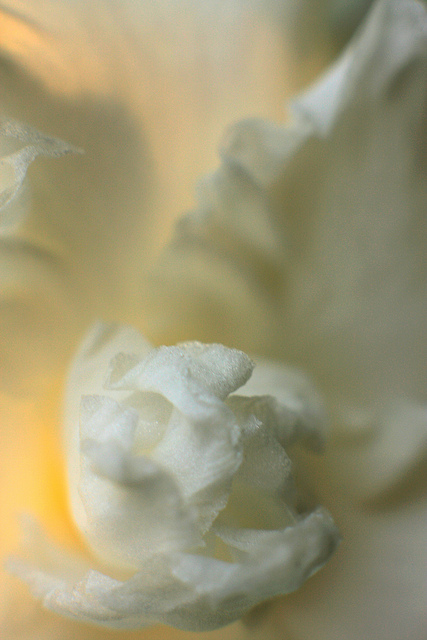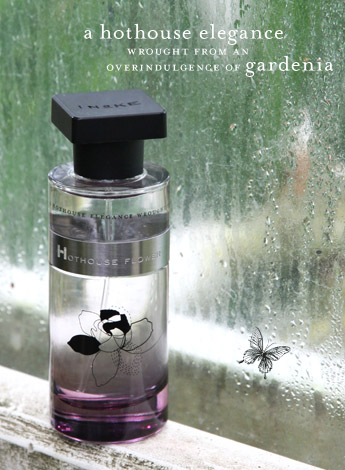
foto: Commons.wikimedia.org fotógrafo: Juanedc Atardecer en el caldenal Parque Luro, La Pampa, Argentina
Si tuviera que elegir uno de entre todos los perfumes de la Library Collection de Amouage, Opus III -un floral oriental de encanto bucólico- sería mi claro favorito. Opus III toca una cuerda dentro de mí, logrando un sonido que me transporta a los momentos más entrañables de mi niñez: las horas con la nariz hundida en viejos libros, el baño a los caballos después de las clases de equitación, los ensayos de recetas con violetas arrancadas al jardín de mi madre. Un solo perfume parece capaz de reconstruir esos días dorados y devolvérmelos, aunque sólo sea por unas horas.
Compuesto por Karine Vinchon Spehner (Robertet) bajo la dirección creativa de Christopher Chong, se dice que este opus fue inspirado por “el arte y ciencia del proceso creativo, desde los momentos de frustración más oscuros al resplandor de la iluminación y el descubrimiento”. Lejos de cualquier posible frustración, sólo encuentro alegría en él. Opus III me habla de días soleados, hierbas silvestres y caballos. Dicho esto, no es un perfume particularmente fácil. Sustancioso, barroco y algo denso, prefiere el encanto de las fragancias de antaño por sobre la sensación de una composición moderna…y las comparaciones son, algunas veces, inevitables. Dentro de Opus III encuentro todos los aspectos que disfruto en L’Heure Bleue sin nada de la melancolía que puede hacerlo difícil de llevar. En vez de fríos tonos de azul, juega con rayos dorados. Es también algo agreste, menos pulido. Si L’Heure Bleue habita antiguos salones de baile, Opus III prefiere el jardín y los establos, pero no pierde jamás la elegancia. El Amouage se siente más empolvado que atalcado, más radiante que sombrío. Su dulzor balsámico evoca atardeceres campestres, cuando la tierra y el aire aún están tibios por el sol y el paisaje se deja ver a través de un velo dorado. La evolución es lineal y la tenacidad, maravillosa.
Caro
Origen de la muestra: Botella comprada en perfumerías Rouge, Buenos Aires.
Amouage Opus III – L’heure dorée
If I were to choose among all the fragrances in Amouage‘s Library Collection, Opus III -a floral oriental of bucolic charm- would be my clear favorite. Opus III strikes a chord within me, a chord whose sound transports me to all the cherished moments of my childhood when I would bury my nose in old books, ride and bathe the horses, invent recipes with the violets my mother used to grow in her garden. A single fragrance seems able to reconstruct those golden days and give them back to me, if only for a few hours.
Composed by Karine Vinchon Spehner (Robertet) under Christopher Chong‘s creative direction, this opus is said to be inspired by “the art and science of the creative process, from the darkest moments of frustration to the brightness of enlightenment and discovery”. Far from any possible frustrations, I only find pure joy in it. Opus III speaks to me of sunny days, wild herbs and horses. That said, it is not a particularly easy fragrance. Substantial, baroque and somewhat dense, it prefers the charm of the perfumes of yore over the feel of a modern composition….and comparisons are, some times, unavoidable. Within Opus III I find all the aspects I enjoy in L’Heure Bleue but none of the melancholy that might render it difficult to wear. Instead of cold shades of blue, it plays with golden beams. It is also somewhat rugged, less polished. If L’Heure Bleue inhabits ancient ballrooms, Opus III chooses the garden and stables, but never loses its elegance. The Amouage feels more dusty than powdery, more radiant than grim. Its balsamic sweetness evokes sunsets in the countryside, when the earth and the air are still warm from the sun and the landscape is seen through a golden veil. Its evolution is linear and its longevity, wonderful.
Caro
Origin of sample: Bottle purchased at Perfumerías Rouge, Buenos Aires













